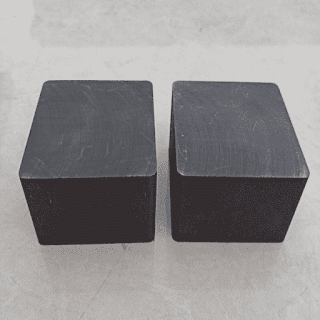Anthracite as a fixed carbon raw material for electrode paste
Anthracite is the main part of the electrode paste. When the electrode is fired, it becomes the skeleton of the electrode, which is very similar to the role played by the pebbles in reinforced concrete.
The use of anthracite is not only because of its low price, but more importantly, it can improve the quality of electrode paste. Anthracite is a dense, black grease mineral with metallic luster. The difference between anthracite and other mineral coals is: high carbon content, high mechanical strength, and low volatile content. Anthracite contains a small amount of water, which is evenly distributed in the carbon, and its ash is basically in thin layers or spots. Minerals.
The ash content of anthracite used in the manufacture of electrode paste is generally not higher than 10%. Therefore, after entering the factory, it is sorted and its ash content is generally fixed below 8%. When the coal is in the form of flakes and long blocks, it is heated and calcined , Easily burst into pieces due to heat.
During calcination, the shrinkage of anthracite coal has a linear relationship with the amount of volatility. Therefore, the anthracite used in the manufacture of electrode paste contains less volatile matter (preferably less than 7%).


Comments
Post a Comment